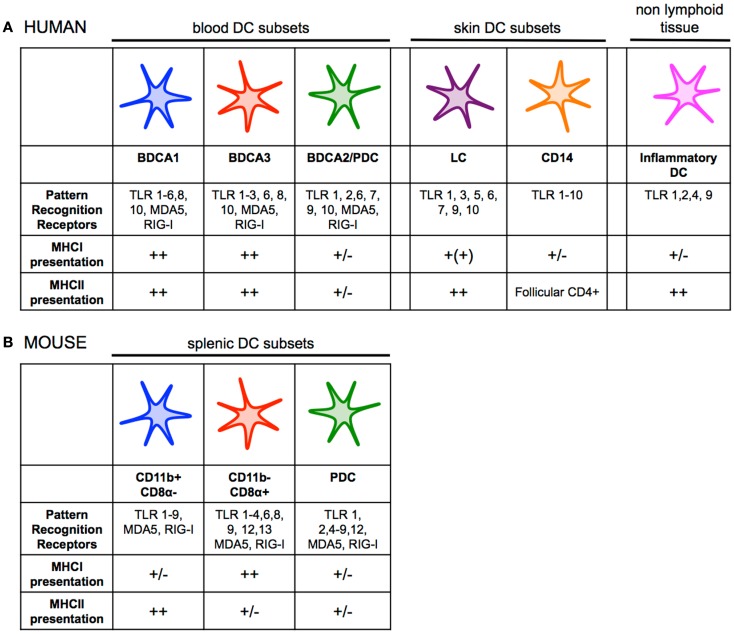Figure 1.
(A) Human dendritic cell subsets have overlapping functions and phenotypes, but also show some degree of specialization. BDCA1+ DCs and BDCA3+ DCs both efficiently present antigen on MHCI and MHCII. pDCs can present antigen to CD4+ and CD8+ T cells, but likely their primary role in the immune response is the production of type I interferon during viral infection. LCs seem to be specialized for cross-presentation on MHCI, while CD14+ dermal DCs prime naïve CD4+ T cells to generate follicular helper T cells. Inflammatory DCs are monocyte-derived, and are present at sites of inflammation. There is also partial overlap between expression of PRRs among DC subsets. (B) A clear division of labor exists among mouse splenic dendritic cell subsets. CD11b− CD8α+ DCs are far superior and essential at priming CD8+ T-cell responses, while CD11b+ DCs are specialized for presenting antigen on MHCII to stimulate helper T-cell immunity. pDCs can present antigen to CD4+ and CD8+ T cells, but likely their primary role in the immune response is the production of type I interferon during viral infection like their human counterparts. There is overlap between expression of PRRs among DC subsets, although CD11b− CD8α+ DCs express much higher levels of TLR3 while CD11b+ DCs uniquely express TLR5 and TLR7 (30, 35, 41, 58, 64, 147–151).

